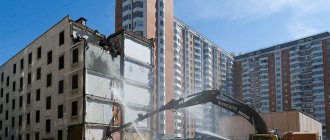Answered by lawyer, K. Yu. n. Yulia Verbitskaya:
Unfortunately, when buying a property (an apartment or an office in an apartment building), you will have to not only take into account, but also submit to the decisions of the general meeting of residents (and owners) in this building. And, if this decision to install a fence was made at a general meeting with the absolute support of the majority, it is unlikely that it will be possible to challenge or suspend the installation of the fence.
Your right is to receive the required number of chips for all your employees. The duty of the operating company is to provide them to you. To meet visitors, you may have to include a special unit in your staffing table - a person who will meet and see off guests. At the same time, the house administration has no right to limit the number of your guests, as well as the time of their visit and arrival and departure.
7 main facts about the general meeting of residents
5 ironclad rules for renovation in an apartment building
As for the cost of the fence - yes, you are required to pay. These costs are distributed among the owners of all premises. They are payable in proportion to your share of the area in relation to the entire area of the building. Thus, I believe the amount will not be very significant. As a recommendation, take advantage of the benefits of a fenced and landscaped area: safety, cleanliness, guarded (closed) yard. This certainly adds respectability to your institution.
The procedure for installing fences in local areas
Many people today install fences illegally. In this regard, this is a popular question in the prosecutor's office. Barriers and other barriers are installed without permission. Emergency situations may arise. For example, the fire department or rescue workers will demolish it without warning. Residents will not receive compensation. Since the equipment or fencing was installed without special permission.
The rules for installing fences indicate that it is necessary to gather the owners of residential premises. At the general meeting the issue of installing a fence and barrier will be raised. A protocol is drawn up if at least 70 percent of residents agree. It is provided to special authorities. What to do if it is not communal property? Make a decision on the formation of a zone through cadastral registration. In this case, the consent of all residents is necessary. The decision of the full owners has greater power.
What documents should I provide?
Do you want to install a fence or put up a barrier? It is necessary to provide special documents for the local area. Initiate barrier installation in real time. This is confirmed by relevant records. It is necessary to ensure the availability of title documents, certificates and cartography.
Permission to fence the local area
Many residents of our city want to fence off the local area. Some of them want to secure it, while others want to use the site comfortably, and also get rid of the illegal privatization of their own zone. There are also frequent cases of incorrect installation. Often such structures have an unattractive appearance. Sometimes they are installed outside the boundaries of the existing zone. The consequences of such actions are fraught. To prevent them from touching you, get permission to install a barrier.
How much does it cost to fence a local area?
Based on the data provided for 2021, the cost of a metal fence is 1,500 rubles per meter. Swing gates cost from 30 thousand rubles, and sliding gates from 50 thousand rubles.
The cost is calculated from a number of points:
- Type of work;
- Length of fences;
- Type of gate or barrier;
- Number of wickets.
For example, it is necessary to fence a perimeter of 300 meters. It is necessary to install two types of work, as well as automation for them, including two gates with an intercom.
Legal director general Nadir Dzhangirov answers:
“Protesting the installation of a fence,” or rather, challenging the decision of the general meeting to install a fence, is possible provided that when the general meeting of owners of the premises of an apartment building made the law, the law was violated, including the procedure for making such a decision was grossly violated. The general meeting has the right to make a decision on the installation of a fence (fence) only in relation to a land plot that belongs to the common property of the owners of the premises. To do this, it is necessary that the land plot under the residential building be formed and registered with the cadastral register. Only in this case is it considered that the land plot is in common ownership of the co-owners of the multi-apartment residential building.
Can I plant my flowerbed at the entrance?
Can I rent a space for a car under my windows?
However, the decision to install a fence on such a plot of land is an issue related to the use of common property. To make such a decision, it is necessary that at least 2/3 of the total number of votes of the owners of the residential building vote for it. If a majority of 2/3 of the total number of votes belonging to all owners of a residential building was not obtained, but a conclusion was made that such a decision had been made, then this decision is subject to invalidation through the court. In addition, the implementation of the decision to install a fence, for example, in Moscow, requires obtaining preliminary consent at the level of local government represented by the municipal assembly.
If there was no violation of the law, then this decision is binding on all owners of the premises of the residential building. Accordingly, the owner of non-residential premises is obliged to bear the costs in the appropriate share. Refusal to fulfill this obligation may result in the HOA, housing cooperative or other management organization filing a lawsuit to collect funds.
Fences for demolition
The story that reached the country's Supreme Court is typical. In a residential complex consisting of five buildings, one decided to separate itself. The HOA of that building registered a large area around the house for its use and blocked off its own adjacent territory. The Iron Curtain was installed in the middle of the common courtyard, because initially the residential complex was built as a single block. Now one of the buildings has become first among equals. Inside there are children's playgrounds, a sports town, and flower beds.
Residents of other houses, as they say, cannot walk or drive through.
“The owners of the premises in buildings 1, 3, 4, 5 were actually deprived of elements of landscaping and landscaping of the local area intended for the maintenance and operation of all five buildings of the residential complex,” the materials of the Supreme Court say.
The fence restricted residents of the remaining four buildings of the apartment building from passing through the adjacent territory of the residential building, as well as the entry and exit of vehicles, including special equipment: ambulances, firefighters and others.
How did this happen? Formally, everything was according to the law: a land surveying project was developed, public hearings were held, and officials approved new boundaries of the plots. And after the necessary seals were placed, a fence appeared in the yard in November 2021.
One resident was present at the public hearing, and from the building around which the fence was being built
As often happens, it was news to the residents of the remaining buildings that, it turns out, there had been public hearings, supposedly someone was interested in their opinion. But be that as it may, I had to sue.
Lower authorities supported the officials and the fenced building. Like, since all the formalities have been met, then there will be a fence. But this is crafty logic, and it does not comply with the law. The Supreme Court explained in detail how those who decided to take part of the common yard were wrong.
Legal issues of management of apartment buildings are discussed by RG experts in the “Legal Consultation” section
“The Judicial Collegium of the Supreme Court of the Russian Federation canceled the previously issued judicial acts and made a new decision,” Denis Glukhov, senior lawyer at the law office, told RG. — The judges indicated that the owners of premises in apartment buildings become co-owners of the land plot under it from the moment it is formed in the cadastre. Violations of their rights, as owners of a land plot, by the land surveying project can be eliminated by way of a negatory claim, the requirement to comply with the statute of limitations does not apply.”
According to him, the Judicial Panel noted that the land surveying project’s violation of the standards for determining the area of plots allocated for a house cannot be considered legal. And secret public hearings cannot serve as a cover for unlawful redistribution of land.
“From the ruling of the Supreme Court, it became clear that the exclusively formal approach of lower-level judges to the consideration of such a dispute is insufficient: the panel critically assessed the formal conduct of public hearings, pointing out the obligation to take into account the opinion of the population expressed during this procedure, since otherwise contradicts its essence,” - says Denis Glukhov.
In this case, the hearings were conducted as a secret operation, only one resident was present, and by coincidence, it was a resident of the very building that fenced itself off. Needless to say, the tenant liked everything. But was this the public opinion?
Apparently, due to their natural modesty, the organizers of the hearings did not widely publicize that such a discussion was taking place. There were no posters, no announcements, nothing. They just quietly listened to themselves and that’s it.
At the same time, in court, the defendants presented a wonderful argument, saying that the results of the hearings still could not influence the final decision. The lower courts agreed. They say that officials have the right to take into account existing comments, but these comments are not mandatory for acceptance. But judges, especially lower ones, are people too, and they can make mistakes.
“Meanwhile, public hearings are a form of exercising the rights of the population living in the relevant territory to participate in the decision-making process by local governments through public discussion of socially significant issues,” the Supreme Court noted. “The purpose of public hearings is to identify public opinion on issues brought up for public hearing.”
The ultimate goal of such a discussion, continues the Judicial Panel, is to develop recommendations on socially significant issues or to obtain a public assessment of a legal act.
“Regulation of urban planning activities is aimed primarily at ensuring a comfortable living environment, comprehensive consideration of the development needs of the population and territories and is necessary to harmonize state, public and private interests in this area in order to ensure favorable living conditions,” the Supreme Court emphasized.
In other words, people’s opinions need to be heard and taken into account, and formal public hearings in this case did not allow this.
“Of course, for subsequent practice, the definition is extremely valuable, has a detailed argument for owners of residential premises, and will also be useful for city administrative structures to adopt further orders in matters of urban land management,” says Denis Glukhov.
Direct speech
Vladimir Gruzdev, Chairman of the Board of the Russian Lawyers Association:
Although the explanations are given regarding a specific case, the legal positions of the Supreme Court of Russia expressed in the document are extremely important. Lower courts must now focus on them. This is exactly how a unified judicial practice is developed: on similar issues, decisions that have already been developed based on the example of other cases and have become standard are adopted.
Development projects should work for the benefit: create a comfortable environment, develop infrastructure, without violating the rights of citizens living in the neighborhood. Controversial issues that arise must be resolved in a civilized way, creating comfort for new projects; the already established conditions of others must not be destroyed.
* This is an expanded version of the text published in the issue of “RG”
Judicial practice on fencing the local area
Installing a fence is not such a simple procedure. First you need to understand the boundaries of the plot of an apartment building. Determine the size and register the existing plot in the cadastral register. He gets his own individual number. He becomes a free share owner of the premises of the apartment building. Do you know the size and boundaries of the yard? Protect it with a fence. Make a decision about construction in an apartment building. After construction is completed, the fence will also become public property for residents living in this apartment building.
Unauthorized fencing of the local area?
Many people install their own fence around their home. Often neighbors put up small fences to fence off the parking space near their own home. Some residents install a barrier. It prevents entry into the yard. Such installations can only be legal if:
- The adjacent area is registered by the cadastral institution;
- At the general meeting it was decided to fence off the area. This is confirmed by the minutes of the meeting;
- There is a rental document, as well as the possibility of equipping it with a barrier or other structures.
What is a local area
In accordance with the Land Code of the Russian Federation, the category of local area includes areas adjacent to an apartment building and designed accordingly. Such territory is the property of all owners of apartments and commercial premises in the building. At the same time, it must meet the standards taking into account the placement of additional facilities and residents.
Residents can use this territory at their own discretion - install playgrounds, improve the area and erect fences. Owners often seek to establish a barrier for stray animals, passing vehicles and unauthorized persons.
It is allowed to place common property in the local area, which also needs protection. All actions with the local area are regulated by regulations:
- Land Code of the Russian Federation;
- Housing Code of the Russian Federation;
- Resolution of the Plenum of the Russian Federation No. 16;
- Resolution of the Arbitration Court of the Russian Federation No. 22.
It is established by law that residents of the house can make a decision at a general meeting on fencing the parking lot, playgrounds and other objects located in the common area.
Types of fencing
There are different fences, they differ in material, size and degree of access restriction:
- a complete ban - any fences, even 2-meter high metal or stone (brick, stone) fences, residents can additionally equip them with cameras or hire a concierge;
- partial ban - the fence is supplemented with a barrier; its installation will require approval from several emergency services (police, firefighters, also ambulance);
- partial, separates part of an entire territory - this is a type of targeted fencing, these can be installed freely, without permission (for example, trash mesh fences or small fences around the lawn);
- prohibition of access to individual objects - such restrictions are used by local utility services, as well as construction companies, a temporary measure for the period of repair work.
In addition, residents have the right to install wickets, wide gates, equip them with modern electronic locks or intercoms, and install cameras there. Such mechanisms are opened with a card or code key. After installation, sets of appropriate keys/cards should be distributed to all owners.
Important! Check whether free use of the selected fence is allowed before installing it.
Adjacent territory of an apartment building: standards 2021
When talking about car parking, the problem of illegal parking must be mentioned. The law implies a number of rules for organizing parking. Violation of any of them automatically qualifies the new parking as illegal. It is almost impossible to resolve the issue with informal places for cars on your own. Therefore, here you should also contact lawyers for qualified assistance, as well as register the local area as your property.
This area is designed so that you can walk your dogs there, create playgrounds, parking lots for cars, etc. However, in reality everything looks different. Especially if the house contains not only residential apartments, but also shops and office space.
A fence around an apartment building, what is needed to put it up
Several sections of ours were removed, and apparently they tried to sell them for scrap. I managed to defend what was mine. .And the fence is always in the way of someone - the rods are bent, sections at welding points are often broken by daredevils, etc. What do you think? - property is always an eyesore for the proletariat))
We recommend reading: How to pay for a domestic injury
In this case, I told about the fence how I personally acted in 2005. If you can offer a better option, I will consider it a gift and will accept you as a manager in the future. I would like to simultaneously inform you that over the 6 years of operation, no one has had any complaints about the fence (bullies don’t count)..
How to deal with illegal fencing?
Unauthorized installation of fences is not permitted. First of all, the legality of the construction is determined. It is necessary to request documents confirming the inclusion of the territory in the cadastral development plan. Additionally, the minutes of the residents' meeting on the arrangement of the fence are provided.
All owners have the same rights to use the territory. This decision should be supported not just by a majority of the owners present, but by a majority of those constituting a quorum or 2/3 of the votes. A decision can only be made if this condition is met.
If documents are missing, one of the following decisions is made:
- Design of fencing in accordance with the interests of residents. To do this, a meeting is held, which is attended by the majority of residents.
- Elimination of illegal construction. This solution is possible if the majority of owners are against it.
To demolish an illegal building, it is necessary to submit a collective application to the Administration. It indicates the address, cadastral number of the plot, confirmation in photographs, and a request to demolish the building. Within a month from the date of registration of the application, the illegal construction is liquidated.
Thus, apartment owners have the right to fence off the adjacent area. To do this, it is important to go through all stages of approval and provide access to all residents.










